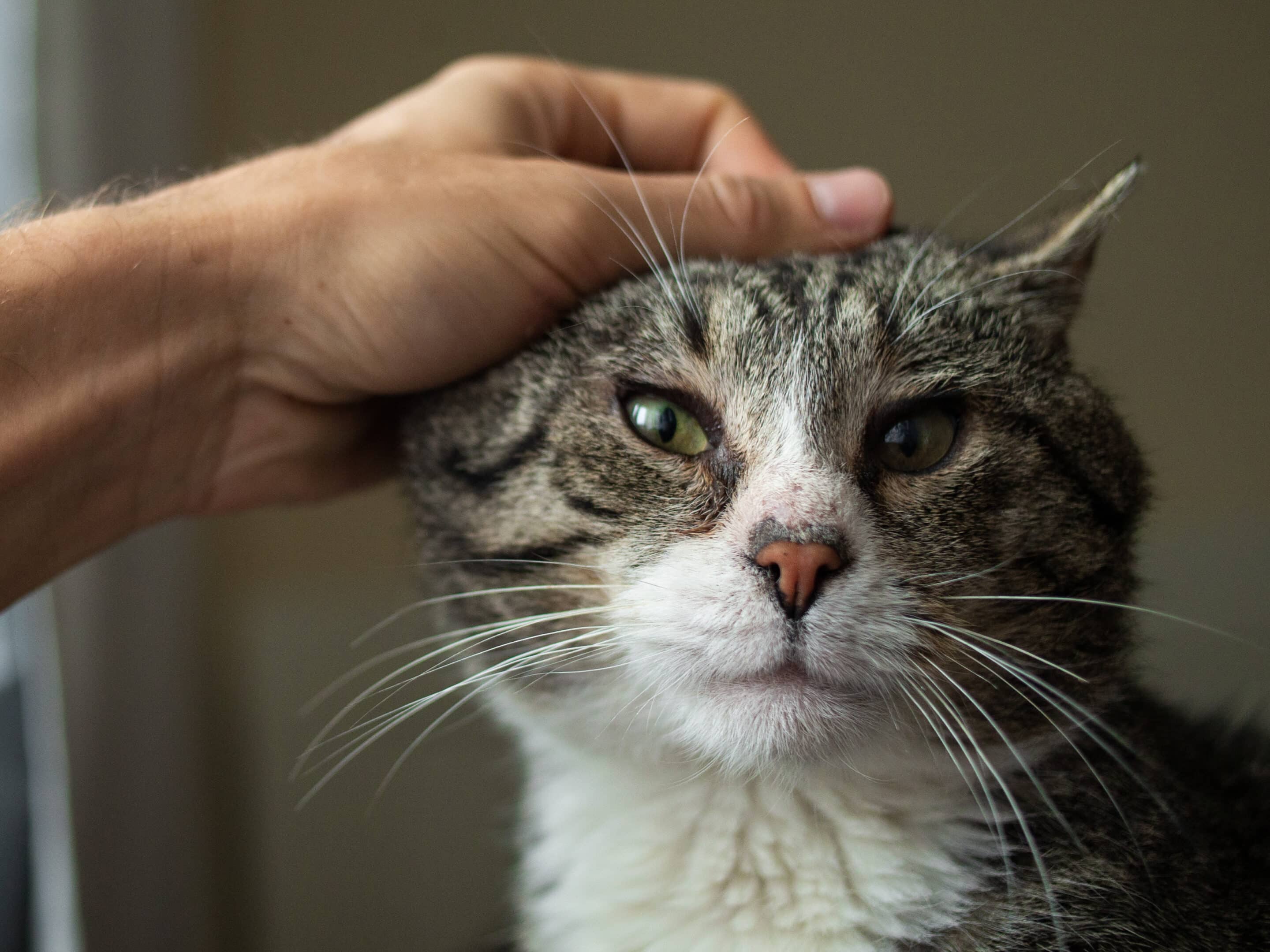So often in my work as an end-of-life care veterinarian, I bear witness to pet owners grappling with the decision to euthanize their pet. They express that, more than anything, they want to get the timing right. They don’t want their pet to suffer, and they also don’t want to end their pet’s life prematurely. How do we know when it is the perfect time to say goodbye?
Written by: By Kellie Littrell, DVM, MPH, MA

Goals in Veterinary End-of-Life Care
In general, the goal of veterinary end-of-life care is to minimize patient suffering. With our pets, suffering can be experienced as physical pain but also encompasses mental and emotional well-being. Within veterinary end-of-life care, it is also important to consider the human-animal bond and the pet owner’s well-being. You might imagine that many factors can quickly add up to create a unique situation for each pet. In many ways, pet ownership is like parenting! There’s no rulebook, concise protocol, or how-to instructions for end-of-life decision-making.
Therefore, goal-setting is essential to veterinary end-of-life care. Not all pets are the same, and neither is the household they live in or the family they live with. Pet owners can work together with veterinary professionals to identify what is most important to the pet owners and the veterinary team as they both advocate for the pet’s best interests. Establishing goals will provide a benchmark for monitoring quality of life.
Assessing Quality of Life
In the same way that every patient is unique, what constitutes a good quality of life is equally individualized. Quality of life is much more than going through the motions of being alive.
Although there are some fundamental, nonnegotiable functions of life such as eating, drinking, urinating, and defecating, there are many other variables to consider as well. Does your pet love swimming and chasing tennis balls? Or are they more of a couch potato? What makes them happy and brings them joy? What’s their favorite thing in the whole world? You can begin to understand that even in one household where the environment is the same, there could easily be different answers for different pets.
For more information on assessing quality of life, check out this recent blog by Dr. Gina Singleton. Regular assessment of quality of life allows us to more objectively monitor changes, visualize trends, and make decisions with established information. Hospice and palliative care veterinarians at Caring Pathways are specially trained and experienced experts at partnering with pet owners through this process.
Perfect Timing is a Trap
Perfect is a tricky word. It’s something we all desire, but we all know it is an impossible task. In my observation, reality dictates that euthanasia is rarely a black-and-white situation. By the time it’s clear-cut, we often feel like we’ve waited too long. Why is that? Generally, if it’s obvious the patient is actively dying and that euthanasia is therefore warranted, then, sadly, many times suffering is also present. Instead, deciding when to say goodbye to a beloved pet is almost always a gray area of ambiguity.
The opportunity we have in pet euthanasia is both a blessing and a burden. Euthanasia is a beautiful, final act of love that we can offer our pets, and it carries an immense weight of responsibility. It is understandable that we want to be sure we are choosing the perfect time. Here’s my truth, though: once you are in that gray zone, any time is the right time. Any time is the perfect time. That’s a difficult reality for many of us. If we can accept it, however, it frees us up to actually achieve our goal: to get it right.
A Different Case for the Perfect Goodbye
What’s left to consider is not when, but how. How can you say goodbye in a way that honors the bond between you and your pet? What can you do to memorialize them in a meaningful way? I would argue that who is present, what you do, where you are, and how you honor them is at least as important, if not more, than when you choose to say goodbye. Although I am increasingly observing pet families that have considered how they want to say goodbye, this is a concept that many people have not fully contemplated.
The process of reflecting on how to say goodbye, as opposed to worrying about when can be a healthy first step in your grief journey. For some ideas, you may want to read “Creating a Bucket List for Your Beloved Pet” or “Saying Goodbye: Honor Your Pet’s Legacy with Dignity and Love.” The internet is full of beautiful ideas… I’d encourage you to plan for a few things that would be meaningful to both you, your family, and your pet. In doing this, I believe the “how” may very well be more significant than the “when” as we strive for the perfect goodbye.

